A recent report by Permit Power, As Cheap as Our Peers: How cutting red tape can lower the cost of rooftop solar and offset rising utility bills finds that by cutting the red tape in rooftop solar permitting, almost 20 million more families would install solar by 2040.
Solar in the U.S. costs up to seven times more to install than in Australia and Germany, according to the Permit Power report. It estimates that in the U.S. the median cost is $28,000 for a 7 kW system, whereas it would be $4,000 in Australia and $10,000 in Germany. These high costs are impediments to adoption, the report notes, with just one in ten families in the U.S. having solar, compared to one in three in Australia.
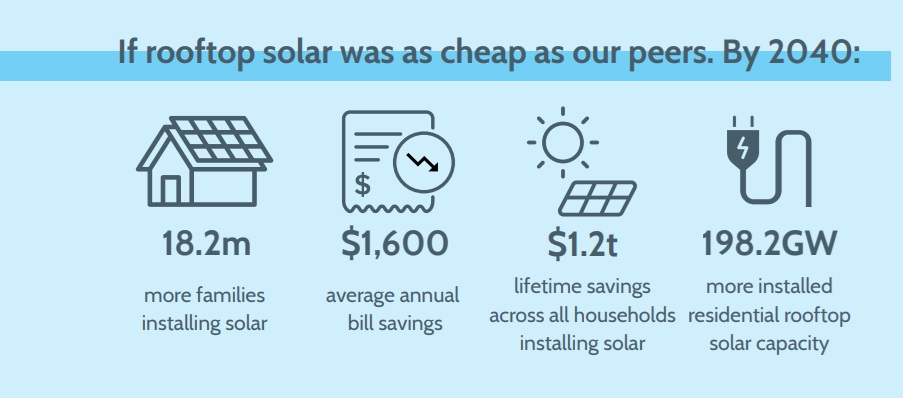
Prior to the passage of the One Big Beautiful Bill Act (OBBBA), people in the U.S. were incentivized to go solar with a 30% tax credit; however, that credit ends at the end of 2025.
The high cost of solar comes at a time when utility bills are rising faster than inflation, with that trend expected to continue, according to Permit Power. The report notes that while one in seven households are living in energy poverty, most cannot afford the high cost of solar, which would help cut their energy costs. Rooftop solar can reduce electricity bills by over 80%, according to the report.
The report finds that if U.S. households could buy rooftop solar at the same price as Australian or German households, almost 20 million more would install solar by 2040. Permit Power estimates they would see average annual bill savings of $1,600, resulting in aggregate electricity bill savings of $1.2 trillion over the lifetime of these additional rooftop solar systems.
Reducing bureaucratic barriers, particularly rooftop solar permitting, inspection and interconnection processes, will reduce installation costs in many areas in the United States, the report finds.
“There is strong research that shows how unnecessary bureaucratic barriers raise the cost of rooftop solar and home batteries in the United States,” said Talor Gruenwald, Research Director of Permit Power and author of the report. “This is the first research that shows the enormous benefits that would accrue to American families if we removed those bureaucratic barriers and brought the costs of home solar and batteries down to levels in other peer countries.”
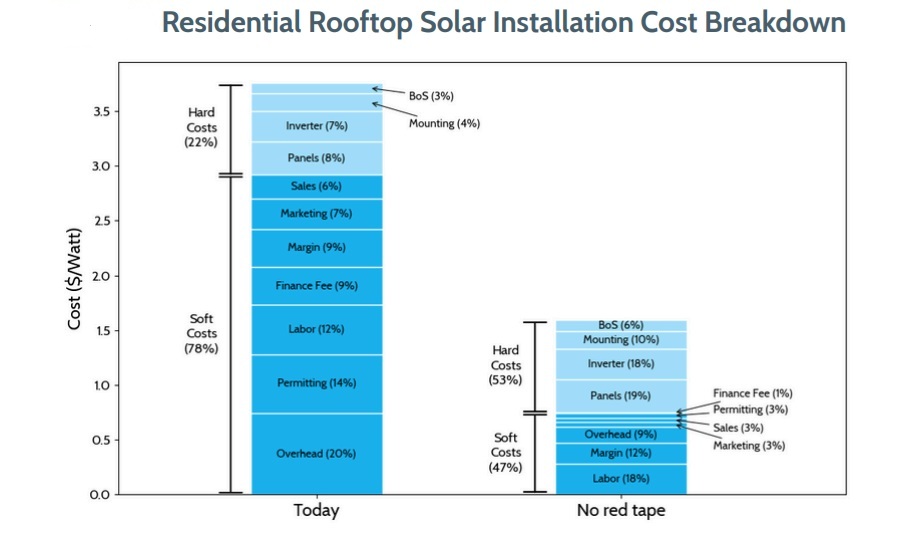
According to OpenSolar, a solar design and permitting software specialist, soft costs account for 78% of the total installed cost for residential solar. These can include what the report describes as “costs and delays associated with outdated and cumbersome approval processes, such as varying and convoluted permitting requirements across localities, differing requirements between plan reviewers and inspectors within the same jurisdiction, and unresponsive and bureaucratic utility interconnection processes that can stop projects being turned on for months after they have been completed.”
The solution
The report outlines ways in which policymakers can cut the bureaucratic red tape:
- Adopt instant permitting software or qualified third party permitting to issue instant permits for standard residential solar and battery projects.
- Use remote inspection protocols that allow code compliance to be verified through photos or video submissions for routine residential installations.
- Implement automatic utility interconnection approvals for qualifying residential systems that use smart inverters and meet established technical screens.
- Update outdated local government and utility requirements that mandate the installation of unnecessary and expensive hardware and prevent the use of modern cost-saving technology.
- These and other policies to cut red tape would enable 23% of U.S. households to get rooftop solar by 2040, according to the report.
[Also read “Simplify solar volunteer campaign launches across the U.S.“]
This content is protected by copyright and may not be reused. If you want to cooperate with us and would like to reuse some of our content, please contact: editors@pv-magazine.com.




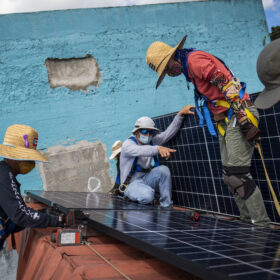

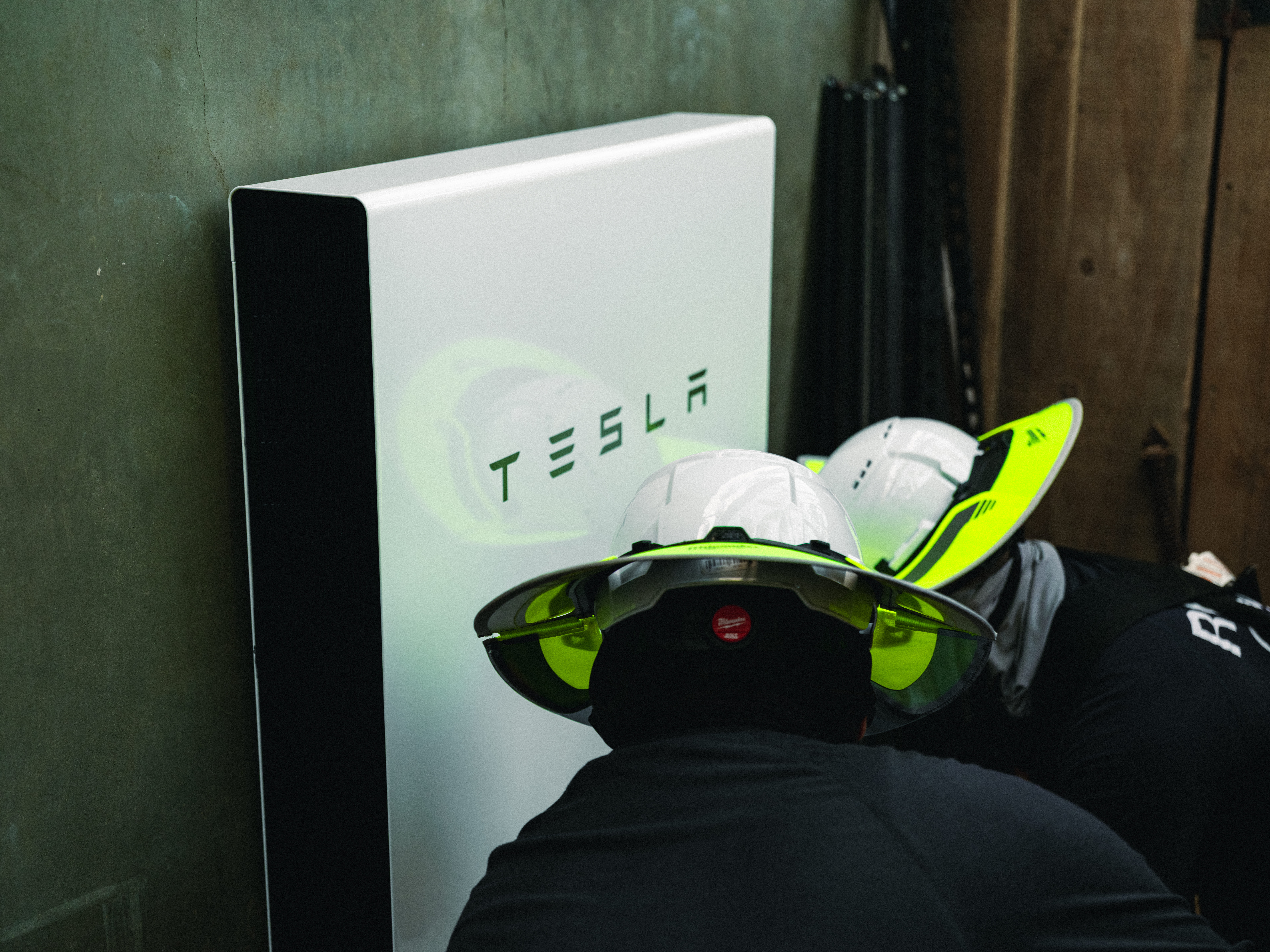
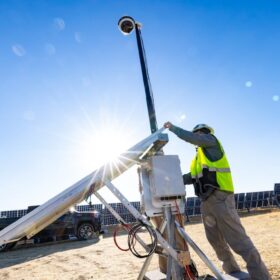

I can testify that permitting leads to extra costs and delays.
I’ve gone through the process three times and all three times there were stupid delays and extra costs.
The third time was the worst. My ground based array was significantly delayed leading to loss of a significant power company incentive, mandatory relocation to a less desirable location, and an absurd requirement to install devices written into the regulation by an ignorant consultant. (These fictional devices did not exist anywhere for purchase. )
This report simply confirms & amplifies why cities & towns that want to reduce & stabilize energy costs for ordinary residential & commercial rate payers need to adopt ordinances that streamline rapid deployment of a matrix of widely distributed micro grids, with on-site non-flammable battery storage & Vehicle-2-Grid chargers at existing large parking lots within their jurisdiction. Right where most of us live, work & commute from large apartments & condos to business parks, shopping centers & various municipal facilities. No new utility transmission, site acquisition or other site improvement spending required. And no permitting or interconnection delays or armies of litigious NIMBYS. All the health care & higher education facilities in my county have already covered over 50% of their big parking lots with solar canopies. Mundane Solar Abundance. They’re already getting it & fortifying the local distribution grid with it.
This is definitely where our all solar associations, industrial and socal, can all come together and help push….there are too many local municipals and different rules to follow… sadly neither helped with the overpriced services solar installers have been charging Americans for the last decade… Now all is going to pay a heavy price because of trump, with a many bankruptcies coming next two years….
I disagree. California has had a streamlined solar application process and has mandated that municipalities offer “Real Time Solar Issuance” since September of 2024 I believe. The cost on permit fees under I believe 38.4KW is capped at $450. So the chart indicating a 14% permitting cost is inaccurate for CA’s market.
The cost of running a business in a highly litigious country/state I imagine contributes to the large overhead 20% vs 9%.
Permit Power’s findings highlight something GismoPower has been saying for years: The U.S. treats rooftop solar like a mini construction project when, in truth, solar generation can be as simple and standardized as plugging in a dryer or refrigerator.
In countries like Germany and the UK, millions of citizens already buy plug-in solar appliances off the shelf: no permits, no roof work, no red tape. The “Balcony Solar” movement has made renewable energy as accessible as any household device. Meanwhile, in the U.S., outdated permitting rules and utility gatekeeping keep solar locked behind barriers of bureaucracy, inflated costs, and inequitable access.
At GismoPower, we believe it’s time for a new category: Plug-In Photovoltaics (Plug-In PV), where solar becomes a consumer appliance, not a construction project. Our Mobile Electricity Generating Appliance (MEGA) is built around this idea: a UL-certified, portable solar carport that plugs into a standard 240V outlet. No roof, no permits, no waiting months for approval, just plug-in power from your own driveway.
Streamlining rooftop permitting is a good start, but it’s only a halfway measure. The real transformation will come when Americans can buy, plug in, and power up solar just like any other household appliance. That’s how we democratize renewable energy, close the energy poverty gap, and empower every family, homeowner or renter, to participate in the solar economy.